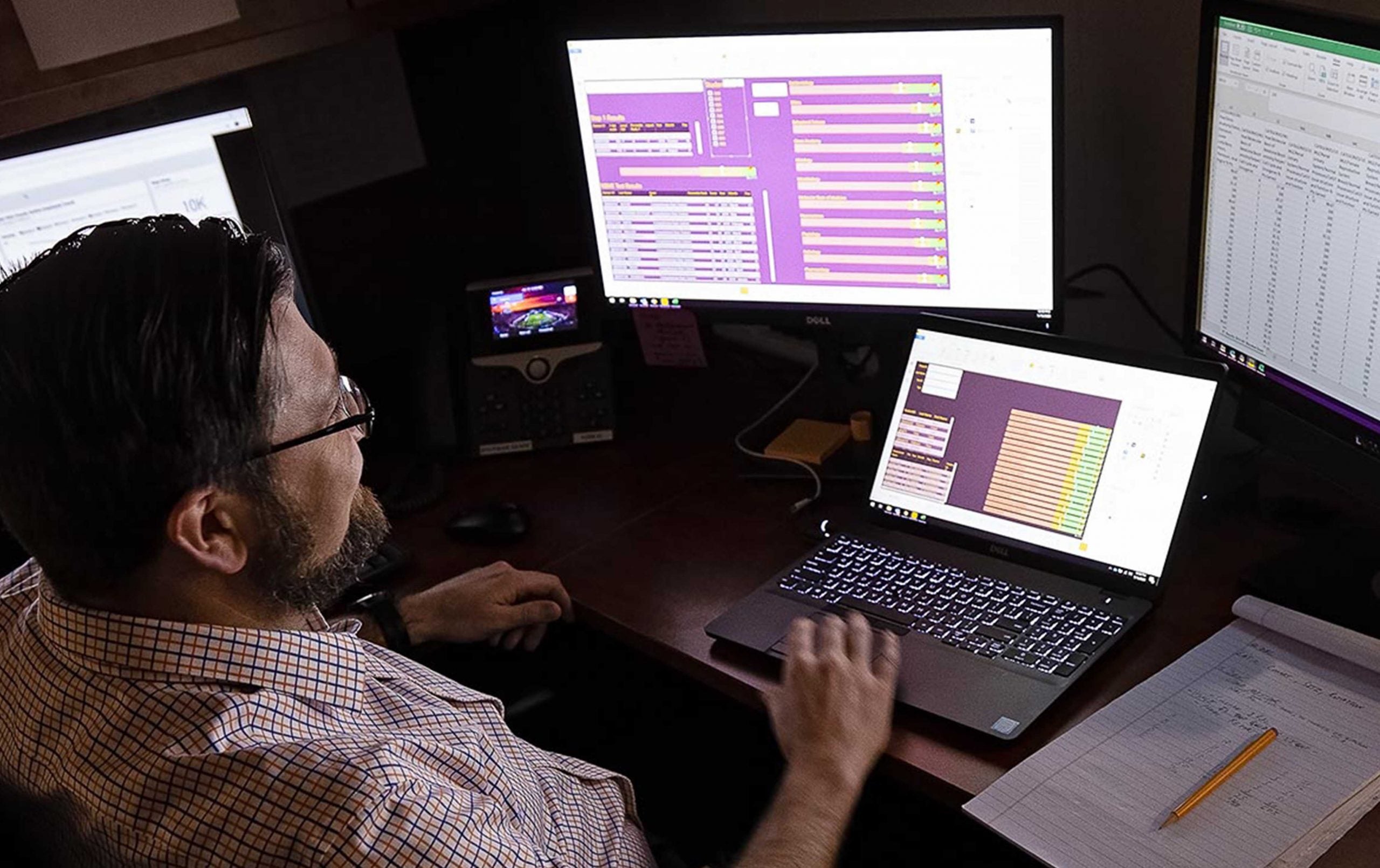EXPANDING BROADBAND OPPORTUNITIES
ECU puts focus on internet access, education in rural communities
COVID-19 uncovered the realities of the rural digital divide. While almost all Americans living in urban and suburban areas have access to high speed internet, only about 63% of people living in rural communities have adopted broadband services.
Due to a lack of access, families are forced to move from parking lot to parking lot in search of internet hot spots for children to sign into Zoom classes, and industry – from farming to manufacturing – are stifled by the lack of fast connections that will allow them to expand their business and reach global marketplaces.
Once defined as any type of internet exceeding traditional dialup speeds, today’s broadband access includes a wide array of connection options, from satellite internet to lightning quick fiber cable.

With many workers switching from in-person to telework, access to fast, reliable internet became essential for workers.
The Federal Communications Commission touts high-speed internet as a connection that reaches 25 megabits per second download and three megabits per second upload. However, not all internet and broadband access types are equal. In some rural counties, one resident may have access to full gigabit internet speeds, while their neighbor a few miles down the road struggles with speeds less than 10 megab its per second – slower by half compared to the national average speed of 18.7 mbps.
For rural internet users, including North Carolina’s farmers, agricultural producers, and small business owners, having reliable broadband access is a challenge. Precision agriculture and advanced manufacturing operations depend on reliable and quick data transmission.
“In the 20th century, access to interstate highways and electricity networks drove economic growth across the United States,” said Sharon Paynter, East Carolina University assistant vice chancellor for economic and community engagement. “Now, it is access to high-speed internet networks. As 5G mobile coverage and fiber networks improve utilization of digital tools, rural communities will be left further behind and fail to compete with urban and suburban counterparts for jobs and economic prosperity without reliable broadband internet access.”
To help ease this barrier, East Carolina University students, faculty members and community partners are exploring innovative new ways to provide broadband access to a greater number of rural residents.
Community Vision
As part of its RISE29 student entrepreneurship program, ECU students explored the factors that lead to poor broadband access in rural communities.
The student team found that large corporations that make up the bulk of internet service providers (ISPs), including Spectrum, Century Link and Google, are sometimes reluctant to invest in high-speed internet accessibility in rural communities. The cost of startup infrastructure and equipment is steep. It takes a long time to recoup those investments with lower customer density in rural regions.
Yet, there is still hope. RISE29 students identified successful rural broadband initiatives in eastern North Carolina that can be models for other small towns across the country. A big factor in these programs – community support. Thriving programs in Hyde and Bertie counties utilized telecommunications and electrical co-ops to provide fixed wireless internet, sharing cost by using existing equipment and spreading out the cost in more efficient ways.
The team proposed bringing community members together and developing a cohesive vision that identifies specific priorities for internet use. By using resources available from state agencies and regional co-ops, like the North Carolina Broadband Infrastructure Office’s Community Playbook, communities can put together a framework and identify already available resources to deploy broadband internet rather than waiting for large scale ISPs to invest in their communities.
However, the team identified adoption rate challenges in rural regions. That challenge is being explored by another set of Pirates in ECU’s College of Engineering and Technology (CET).
Industrial IoT
Along with providing internet access, one of the hurdles facing widespread broadband internet use in rural North Carolina is technology and digital literacy.
A CET project, led by faculty members John Pickard, Phil Lunsford and Jimmy Linn aims to bridge the industrial internet of things (IIot) gap in rural eastern North Carolina. The project, funded by the U.S. Department of Agriculture, is a collaborative distance learning program between ECU, nine North Carolina high schools and early colleges, and two regional community colleges across three counties.

ECU faculty are working with high school, early college and community college students to address industrial internet of things literacy in eastern North Carolina.
As part of the program, high school and community college students and instructors will participate in annual video-delivered IIot lectures, remote labs, seminars and workshops; enroll in certificate program courses; access ECU’s remote IIoT lab; and participate in early college capstone courses working directly with industry partners learning practical advanced manufacturing skills.
In all, the program will benefit more than 500 high school students, 625 community college students, and 75 community college and high school instructors. The program hopes to increase the percentage of community college students gaining employment within six months of graduation will increase by at least five to 10 percent at each community college location.
“The equipment purchased through this project is of great benefit to the participating community colleges and high schools,” Pickard said. “It will enhance their ability to offer courses to students in early colleges, help solve some of the transportation issues facing our rural population, and provide staff, student, and parents with online learning and engagement opportunities.
“In addition, the cross-institutional sharing of STEM and IIoT related lectures, labs and industry engagements made possible by this project enables schools to better equip students and expanding workforce with the necessary skills to fully compete in the global economy.”
Providing Access
While eastern North Carolina plans for an expanded broadband future, ECU is doing its part during the COVID-19 pandemic to provide high-speed internet access throughout Greenville.
In April, the university announced that its Wi-Fi network would be made available to K-12 and college students without reliable broadband internet service.
ECU’s Information and Technology Computer Services established a new Wi-Fi network that was made available across all ECU building and campuses. Users are encouraged to practice social distancing while visiting campus to access Wi-Fi, but a signal can be reached in a variety of public areas, including the Dowdy-Ficklen Stadium parking lot and the ECU mall.
A list of access sites is available, including network connection information.
As interconnectivity remains a driving force for business growth, it is important to consider the real and virtual connections the future holds in rural communities. By investing in broadband access and digital literacy in eastern North Carolina, ECU is preparing the state’s emerging innovators to be competitive in the region and beyond.
